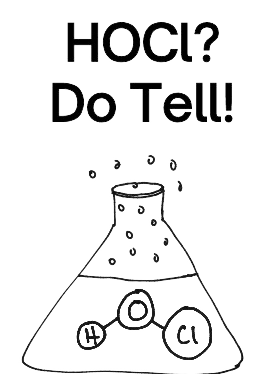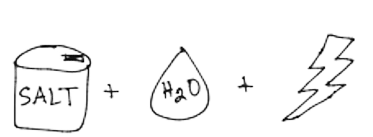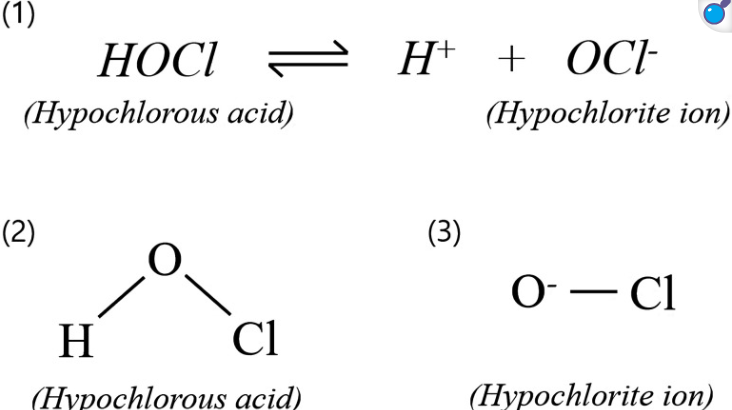Sanitizing
HOCl 101 Reference Guide
Information compiled and written by Vivica
What is HOCl (Hypochlorous Acid)?
Hypochlorous acid (HOCl) is the most powerful, natural, eco-friendly disinfectant that is not only incredibly effective at killing pathogens on the skin and surfaces, but is also safe to inhale deep into your lungs while being quite affordable to make for just about every budget. It’s great for your skin, helps reduce pathogen spread, discourages superbugs, and is completely non-toxic because it’s made by the immune system of all mammals. HOCl is the Swiss Army knife of chemical solutions because it does everything! It is sometimes referred to as the “Miracle Molecule” because its applications are seemingly endless. While it may feel like you’ve found a “glitch in the matrix,” HOCl lives up to all the hype, and will continue to impress you the more you learn about it.

What is HOCI
Hypochlorous acid (HOCI) is a weak acid. It is formed when chlorine dissolves in water.
HOCI is produced by electrolysis, where an electrical charge is passed through a solution of salt and water.

HOCl Rapidly Kills Corona, Flu, and Herpes to Prevent Aerosol Spread
Abstract
The objective of this study was to develop an experimental platform to identify a safe and effective virucide with the ability to rapidly destroy oral viruses transported within droplets and aerosols. Our test method employed mixing viruses and virucides in a fine-mist bottle atomizer to mimic the generation of oral droplet-aerosols. The results revealed that human betacoronavirus OC43 (related to SARS-CoV-2), human influenza virus (H1N1), and HSV1 from atomizer-produced droplet-aerosols were each fully destroyed by only 100 ppm of hypochlorous acid (HOCl) within 30 s, which was the shortest time point of exposure to the virucide…


Virucidal efficacy of acidic electrolyzed water (AEW) against African swine fever virus and avian influenza virus
Hypochlorous acid (HOCl) is a form of free chlorine and an active component of AEW. AEW is generated by passing an aqueous salt (NaCl) or acid solution (HCl) through an electrolytic cell where the electrolysis reaction takes place. The aqueous salt solution is supplied to the electrolytic cell and the subsequently produced chlorine ion is electrolyzed to chlorine which in turn undergoes reaction with water to generate HOCl.
Chlorine-based disinfectants, such as sodium hypochlorite, are widely used owing to their high efficacy and low cost. As a disinfectant, chlorine is a strong oxidant and is used to control against a broad spectrum of bacteria and viruses in the clinical, agricultural, and food industries. However, a common concern is that it is potentially toxic, corrosive, and volatile and leaves toxic residues. Advances in technology have allowed large-scale production of stable chlorinated water through the electrolysis of diluted salt solution, which is also referred to as “electrolyzed water (EW)” or “electrochemically activated (ECA) water”.

Evaluation of sprayed hypochlorous acid solutions for their virucidal activity against avian influenza virus through in vitro experiments
Chlorine compounds are very popular because they are easy to use and have a wide range of applicability, they can be used quickly, they have a broad spectrum, they are readily available, they have relatively low toxicity to human and animals, and their costs are lower [5, 29]. Their disinfection ability is reduced in the presence of organic materials [5, 17]. Hypochlorites are powerful oxidizing agents with bactericidal, fungicidal and sporicidal activity, and hypochlorous acid is their active moiety [15, 29]. There is less information available concerning the mechanism of action of hypochlorous acid solution, but in general, it affects structural proteins, such as the capsid or surface compounds, lipid envelop (if present) and nucleic acids (DNA or RNA) of viruses [4, 20, 27].

